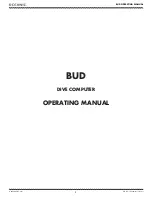
Operating Manual EMGZ480
18
Example:
•
Please do the offset adjustment as described in „8.1. Simulating Method, Calibration
with PLC or PC“.
•
Calculate the Gain factor using the formula above.
•
Enter the calculated Gain value in the parameter CAN-BUS object 2002h
Gain
.
•
Offset and Gain are now fail safe stored in the measuring amplifier.
8.3
Scaling of Analogue Output
The analogue output in the EMGZ480 (see schematics in Fig.9) can be scaled to any
nominal force. E.g. 500N must correspond to 10V the maximal output signal of the
amplifier.
•
Calibrate sensor and amplifier as shown in “8.1. Simulating Method, Calibration with
the PLC or PC”.
•
Enter the nominal force that should correspond to the maximum output of the
amplifier in CAN-BUS object 2040h.
•
The value has 4 digits. The decimal point depends on the CAN-BUS Object 2003h
“
Force of sensor”.
•
The scaling factor is now fail safe stored in the measuring amplifier.
8.4
Configuring the Lowpass Filter
The lowpass filter in the EMGZ480/480.M16 suppresses faulty signal variations that may
be caused by unbalanced rollers, vibrations of the machine, or similar instances. Signal
variations that are faster than the cut-off frequency of the filter are suppressed. The
lowpass filter is configured by setting the cut-off frequency and its filter order. The table
below shows the value that has to be sent to CAN-BUS object 2005h.
Lowpass filter
cut-off frequency
Setting value
for filter of 1
st
order
Setting value
for filter of 2
nd
order
(Filter OFF)
00h
00h
1 Hz
43h
C3h
2 Hz
44h
C4h
5 Hz
45h
C5h
10 Hz
46h
C6h
20 Hz
47h
C7h
50 Hz
48h
C8h
100 Hz
49h
C9h
Note
If the cut-off frequency is set too low, the output signal will become sluggish. In such a
case it could happen that the feedback value is no longer suitable for control loop
applications. The best trade off for the cut-off frequency must be found by considering
the control loop limitations.
















































